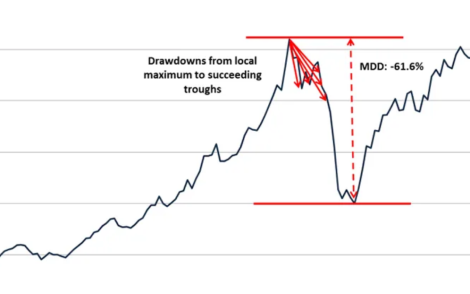

A simpler way of seeing the formula in action is to reduce the range to say only 4 or 5 cells and jump into evaluate formula. Once you have the calculated array of 8, a MIN/MAX function will give you desired results. The N() simply converts this to 1s or 0s depending upon TRUE or FALSE. To create this matrix, the TRANSPOSE(ROW(A2:A9))<=ROW(A2:A9)) comes into picture. 5 values summed in the 5th set, 6 in the 6th and so on. The increasing number of 1s in each set means that the next value in A2:A9 is added to the respective SUMPRODUCT calculation, thereby giving you a cumulative total of the 'x' number of entries depending upon which set you are looking at i.e. Each of these eight sets will now get multiplied by the respective values in A2:A9 and summed, essentially a SUMPRODUCT(), thereby giving you a result of 8 summed up values. The matrix of 64 (8 sets of 8 each, since range of data is 8 rows) will start with a single 1 and seven 0s, two 1s and six 0s, three 1s and 5 0s, four 1s and four 0s. The idea is to get a matrix multiplication (MMULT) going. Due to the nature of the assumptions in the model for drawdown using the Theis equation, it is most commonly used for single well analysis.I'm not the best at explaining and Sucuri makes an appearance every time I'm trying to post on the forum. Assumptions underlying all of the derivations must be taken into consideration also. To ensure the performance and efficiency of the well and the protection of the aquifer being pumped from requires many tests and a careful study of all the factors invloved. The calculation of the cone of depression for different pumping rates for various periods of time is just one small part of a many faceted and detailed evaluation of a potential well site. High and low storativity both create a wide cone with the low storativity having a deeper v-shape.įigure 5: Effects of Storativity and Transmissivity on the Cone of Depression
#WELL DRAWDOWN FORMULA PSP#
Low transmissivity produces a tight ``v'' shape, while high transmissivity pulls the cone out into a wider, more shallow shape. pwf wellbore (bottomhole) flowing pressure pwh wellhead pressure psp separator pressure pST stock tank pressure The corresponding rates are qo oil production rate ( STB /day) qg gas production rate ( SCF /day) The pressure difference ( pR pwf) is called the reservoir drawdown. Drawdown at any point at a given time is directly proportional to the pumping rate and inversely proportional to aquifer transmissivity and aquifer storativity.'' Figure 5 illustrates these relationships between high and low transmissivity and storativity. ``For a given aquifer the cone of depression increases in depth and extent with increasing time. A plot of the cone of depression can be calculated using values of or the drawdown at various values of r for a given time t. If T, S, and the pumping rate Q are known for the aquifer, the drawdown can be easily calculated. Storativity is the addition or release of water to the storage space due to the increase or decrease of hydraulic head, while transmissivity is a function of the hydraulic conductivity and the thickness of the aquifer and descibes how easily the aquifer moves groundwater through its pore spaces. The exponential integral is easily calculated with u defined as above and is known as the Well Function, W(u). Appendix 4 for Well Yield and Recovery Report.) Initially you will be pumping with the gate valve not throttled. 577215664901532860606512Īt distance r and time t after pumping began (See Appendix 3 for additional calculations and. = drawdown at distance( r) at time ( t) after the start of pumping Įuler`s constant =. The Theis equation has become the most widely used equation in transient groundwater hydraulics and the solution in terms of drawdown is Theis found the non-steady flow of groundwater to be analagous to the unsteady flow of heat in a homogeneous solid. He developed an analytic solution for the drawdown for a non-steady flow in a confined aquifer. Theis first published in 1935 ``The Relation Between the Lowering of the Piezometric surface and the Rate and Duration of Discharge of a Well Using Groundwater Storage''.

Next: Hydraulic Conductivity Up: Radial Flow to Previous: Radial Flow toĬ.V.


 0 kommentar(er)
0 kommentar(er)
